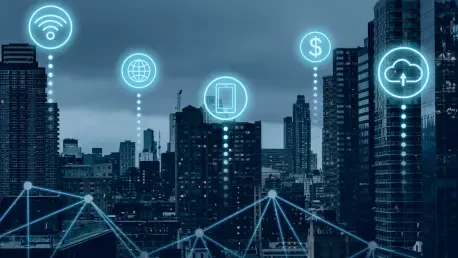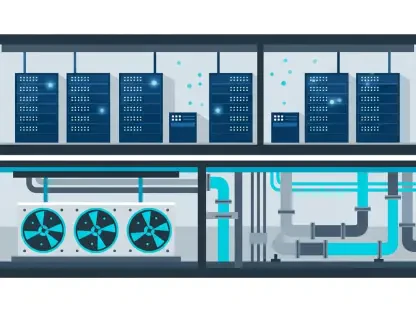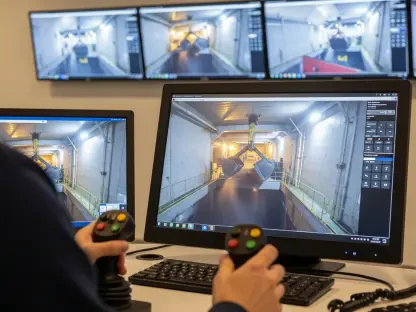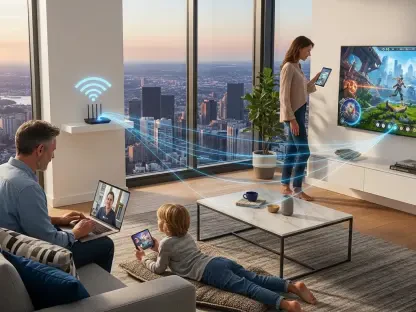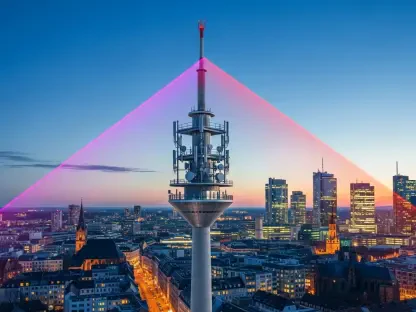As urban populations continue to surge globally, the strain on city infrastructure, resources, and quality of life has never been more pronounced, pushing the demand for innovative solutions to unprecedented levels. Smart cities have emerged as a powerful response to these challenges, harnessing advanced technologies to create efficient, sustainable, and livable urban environments. In 2025, a select group of companies is leading this transformation, integrating digital frameworks to tackle issues like traffic congestion, energy waste, and public safety. These pioneers are not just reshaping cityscapes but redefining how communities function and thrive. From intelligent transportation systems to eco-friendly buildings, their efforts are setting new standards for urban living. This article delves into the forefront of this movement, spotlighting the top companies driving change and exploring the technologies that are making smarter, more connected cities a reality for millions around the world.
Shaping the Future of Urban Living
The concept of smart cities marks a significant evolution in how urban areas are planned and managed, focusing on the seamless integration of technology to solve everyday challenges faced by growing populations. These cities utilize interconnected systems to enhance efficiency across various domains, including energy distribution, transportation, and governance. By leveraging real-time data, urban centers can optimize resource allocation, reduce operational bottlenecks, and improve service delivery to citizens. Leading companies are at the heart of this shift, deploying solutions that range from smart grids for energy management to digital platforms that foster transparency between governments and residents. The impact of these initiatives extends beyond mere functionality, aiming to create urban spaces that are responsive to the needs of their inhabitants while addressing long-standing issues like pollution and overcrowding.
A key aspect of smart cities is their emphasis on sustainability and safety, which are critical for ensuring long-term livability in densely populated areas. Advanced technologies enable the development of energy-efficient buildings that minimize environmental impact and surveillance systems that enhance public security. These innovations are not just about adopting the latest tools but about crafting environments where technology serves the dual purpose of improving quality of life and protecting natural resources. The drive toward eco-friendly urban spaces is evident in how companies prioritize renewable energy integration and waste reduction strategies. Meanwhile, public safety solutions ensure faster emergency responses and better crisis management, making cities more resilient. This holistic approach reflects a broader vision of urban development that balances progress with responsibility.
Industry Leaders Driving Innovation
Among the trailblazers in the smart cities sector, Siemens stands out with a commanding market share of 6.0–7.0%, underpinned by its cutting-edge solutions tailored for urban challenges. The company’s Insights Hub and Grid Edge technologies harness the power of the Internet of Things (IoT) to enable data-driven decision-making, helping cities manage resources more effectively. Siemens also excels in mobility through its Intelligent Traffic Systems, which alleviate congestion and streamline transportation networks, while its Building X platform optimizes infrastructure management for greater efficiency. This multifaceted approach not only addresses immediate urban needs but also lays the groundwork for scalable, future-ready systems. Siemens’ commitment to resilient infrastructure highlights its pivotal role in transforming how cities adapt to modern demands, ensuring they remain functional and sustainable amid rapid growth.
Cisco, with a market share of 5.5–6.0%, is another major player reshaping urban environments through its Smart Connected Communities solutions, which focus on robust network infrastructures essential for smart city operations. By prioritizing seamless connectivity, Cisco enables the integration of various urban systems, from traffic monitoring to public services, ensuring they operate in harmony. Additionally, its emphasis on eco-friendly Smart Building solutions aligns with global sustainability goals, reducing energy consumption in urban structures. This dual focus on connectivity and environmental responsibility positions Cisco as a vital contributor to the modernization of cities. The company’s work demonstrates how foundational network technologies can empower urban areas to handle increasing complexity while maintaining a commitment to greener, more livable spaces for residents and businesses alike.
Huawei, capturing a 4.0–5.0% market share, plays a crucial role in enhancing urban management through its City IOC platform, which integrates real-time data to improve public service delivery and safety. This technology allows cities to respond swiftly to emerging issues, from traffic disruptions to emergency situations, creating ecosystems that prioritize citizen well-being. Huawei’s successful deployments across diverse global regions underscore its ability to tailor solutions to unique urban contexts, fostering greater governance and community engagement. The company’s data-driven approach exemplifies how actionable insights can transform the way cities operate, making them more adaptive and inclusive. Huawei’s contributions highlight the growing importance of responsive, citizen-focused systems in building urban environments that are both efficient and equitable.
Technologies Powering Smarter Cities
At the core of smart city development are transformative technologies like Artificial Intelligence (AI), IoT, and big data analytics, which enable cities to anticipate and address issues before they escalate. AI and machine learning algorithms provide predictive insights into traffic patterns, energy consumption, and public safety risks, allowing urban planners to make informed decisions. IoT devices, embedded across city infrastructure, collect and transmit data in real time, creating a networked environment where systems communicate seamlessly. Big data analytics further refines this process by identifying trends and inefficiencies, ensuring resources are used optimally. Together, these technologies form a digital backbone that empowers cities to operate with unprecedented precision, tackling challenges like congestion and resource scarcity while enhancing the overall urban experience for residents.
Another critical enabler is 5G technology, which offers the high-speed connectivity necessary to support vast networks of IoT devices and real-time data processing in densely populated areas. This advancement facilitates instantaneous communication between systems, from smart traffic lights to environmental sensors, ensuring rapid responses to dynamic urban conditions. Beyond 5G, emerging tools like edge computing bring data processing closer to the source, reducing latency and improving efficiency. Generative AI also shows promise in optimizing urban planning and resource allocation, offering innovative ways to simulate and address future challenges. As these technologies continue to evolve over the coming years, strategic partnerships among industry leaders are accelerating their integration, paving the way for scalable solutions that will define urban innovation well into the future.
Navigating Challenges and Opportunities Ahead
Despite the remarkable progress in smart city development, significant challenges remain, including privacy concerns and the high costs associated with deploying advanced technologies on a large scale. The extensive data collection required for real-time urban management raises ethical questions about surveillance and personal information security, necessitating robust safeguards and transparent policies. Additionally, the financial burden of implementing smart infrastructure can be prohibitive, especially for cities in developing regions with limited budgets or regulatory support. These barriers often slow the adoption of transformative solutions, highlighting the need for innovative funding models and international cooperation to bridge gaps in resources and expertise. Addressing these issues is essential to ensure that the benefits of smart cities are accessible to all, regardless of economic or geographic constraints.
On the flip side, the opportunities presented by technological advancements offer a promising path forward for overcoming these hurdles and expanding the reach of smart city initiatives. Innovations in AI, IoT, cloud computing, and 5G are opening new avenues for urban transformation, enabling more efficient and cost-effective solutions over time. Governments and private entities are increasingly forming alliances to pool resources and knowledge, fostering an environment of collaboration that drives progress. Public awareness campaigns also play a vital role in building trust and demonstrating the tangible benefits of smart technologies, encouraging wider acceptance. By capitalizing on these opportunities, stakeholders can work toward creating urban ecosystems that are not only technologically advanced but also inclusive, ensuring sustainable growth and improved quality of life for future generations.
Building on Past Successes for Tomorrow
Reflecting on the strides made in smart city development, it is evident that companies like Siemens, Cisco, and Huawei have laid a strong foundation with their pioneering solutions in IoT, connectivity, and real-time urban management. Their efforts have successfully addressed critical urban issues, from energy efficiency to public safety, demonstrating the profound impact of integrated technologies on daily life. Sustainability has been a central focus, with initiatives that reduce environmental footprints through smarter resource use. These achievements have set a benchmark for what cities can accomplish when innovation and collaboration converge, providing valuable lessons for ongoing and future projects.
Looking ahead, the next steps involve scaling these successes through continued investment in emerging technologies and fostering partnerships that bridge gaps in infrastructure and funding. Stakeholders must prioritize equitable access to smart solutions, ensuring that benefits reach underserved communities. Developing comprehensive policies to address privacy and security concerns will be crucial in maintaining public trust. By focusing on these actionable strategies, the industry can build on past progress to create urban environments that are more resilient, inclusive, and prepared for the evolving demands of the coming years.
